Funnels

Intro
Last week I found myself pushed into running a module cold - and since I’d bought a bunch of funnels from Bundle of Holding, I decided to let the players pick one, and I’d just run it ‘by the book’. What the players ended up picking was Attack of the Frawgs by Thick Skull Adventures. It’s short; has a campy name, and a frogman right on the corner - who does not want to thump some frogmen and get some loot, right?
Well… It was terrible. I stopped in writing a mega-teardown of the module because there ain’t anyone who wants to read that. So instead I pulled out a chunk to explore: What the hell makes a good funnel anyways? I should probably introduce the concept first.
What’s a funnel?
Funnel modules come out of the OSR world and are particularly prevalent in Dungeon Crawl Classics (DCC). So, if you have only played Dungeons and Dragons or other non-OSR games, you might not have encountered it.
A funnel is a Darwinian method of generating a party of level 1 adventurers. Rather than carefully crafting your guy, the player starts by randomly generating 4 level-0 characters who only have the the barest amount of health and abilities - they are newbies, shit gong farmers who are swept from their mundane lives and called to arms. Then, as a mob, these lemmings are fed into an woodchipper ‘adventure’ - a dangerous trial of traps, monsters, and sweet loot, where by the end, each player is expected to have 1-2 standing characters that can now be promoted to full adventurers.
Basically; a funnel involves a LOT of zergling-rushes and stupid-silly character deaths, and after watching them bumble and survive their way through a harrowing hell, many players become quite attached to their little screwups. More than just creating an emotional connection and paring down a bunch of ‘options’, the funnel is also supposed to provide moments that reveal the lemming’s personality and potential future: The “Why” behind what turns him from a peasant, into a warrior, thief, or spellcaster.
What’s a good funnel?
So here’s what I consider the characteristics of a “good” funnel in short.
- The funnel is deadly. It appropriately savages the party to ensure enough people die to narrow the field. It paces this action across the module for easy modulation.
- The funnel accounts for ‘over’ savaging the party. Some parties are just unlucky, and people will need to ‘refill’ on lemmings.
- The funnel has character hooks. It has opportunities for PCs to ‘reveal’ themselves in a way that leads to personality traits and class choices via spellbooks, artifacts, weapons, holy symbols, skill challenges, equipment, potential instructors, manuals, documents, and so on.
- The funnel introduces the basic concepts of the game such as traps, skill challenges, puzzles, etc.
- The funnel is instructive to the GM - it’s probably their first adventure too!
- A call to adventure. After undergoing a trauma-induced nightmare where half of their friends die, why do they go back for more?
Let’s go through these in a bit more detail.

Deadliness
No matter how good the players are, this is a selection process. Pressure should be maintained on them. A good funnel should not handhold and then cull all the characters at the end, but rather have the psychology of a foxhole under siege; players should feel their little screwups survived despite the odds.
I actually think a good funnel tends to inverse the combat difficulty: The module starts with the most brutal combats up front where the most characters are still alive, and then tapers off in actual difficulty as the pack narrows. A good funnel also needs to take care to make combat highly modular. A really lucky party might enter the end-game with lots of lemmings, but some might be absolutely savaged by a streak of bad rolls. A GM will need to be able to add and remove monsters situationally.
Not deadliness
Keep in mind; unlike a normal dungeon dive, a funnel is a character creation process as much as an adventure: Dying in character creation fucking sucks, the party should succeed and make it out! Parties can fail in a normal module, but it’s an annoying outcome in a funnel.
For that reason, the scenario should have some excuse for ‘refills’. If a party gets absolutely savaged, the module should have ways of adding more people to the pool: Other parties, freed slaves, prisoners, etc.
Character Hooks
In a funnel, The characters should encounter a lot of things that make their future obvious. Here are some examples:
- The characters encounter an abandoned shrine, and as one character interacts with it - prays to it, loots it, destroys it, they receive a divine message or call should they prove themselves.
- The character finds an exotic weapon embedded in the stone bearing the sigil of a long-dead order of knights. This ancient, wondrous blade can’t be wielded properly except by one who sets themselves down the path to learn it.
- The characters find the remains of a magical researcher - he stumbled alone into this hole, and now only bones and belongings remain. On top of clues about the dungeon, you find his battered spellbook. With study, you might take his path.
- The party finds the tomb of the Gray Hatter, a rogue of some legend.If one of them takes his signature disguise or tools, the legends can start anew.
Basically, give the characters a lot of trinkets, books, small artifacts, NPCs, holy symbols, weapons, and world lore-nuggets are all things that can be used by your players. Also, isn’t it just fun to give your dungeon that kind of history?
Instructiveness
A funnel is likely to be the player’s first encounter with a Dungeon Crawl Classics adventure - so it should put the players through the paces. Of note here is that these challenges should be ones that are quickly dispatched once one or two characters have succeeded. Given the lemmings stats, if every character has to make anything but a trivial check, you are liable to wipe out huge swaths of the party on a river crossing. Ask me how I know.
Also, if you can make it show alternative solutions without beating the players over the head, that is great too. Some players just don’t understand that there are many dimensions of problem-solving available to them.
Wrap-up
Attack of the Frawgs ends with the following note:
Now that the surviving PCs have had a taste of adventure, there is certainly no way they can go back to their original life as mundane laborers …
That got a good laugh from my party. Attack of the Frawgs doesn’t create adventurers, but drags some villagers through a traumatizing mess where 2/3rds die with nothing much more to show for it but the appreciation of their fellows. There are no temptations of richness, power, or discovery that compels them to brave danger again. One player commented, “I think my guy just wants to go home, hug his goat, and cry himself to sleep.”
So that’s probably the best take-away. If you’re evaluating or writing your own funnel, ask yourself: Is this thing creating an adventurer?

One-shot Review: Trophy Gold
Temporary desertions have once again opened the door for a one shot review of another system. This time, it’s Jesse Ross’ Trophy Gold. In truth, I’ve been sitting on this review for well over a week, but we will get into why later.
As usual: Take this review for what it is - a short exposure. I ran this game as a 5 hour-long one-shot. That means that we did not really cover the downtime rules (not that it’d matter), nor did we have access to the companion book: Trophy Loom.
With that said, lets get into it. This ends up being somewhat rambly, so you’re welcome to skip to the conclusion.
The What
For the unfamiliar, Trophy Gold is a narrativist, collaborative Tabletop RPG about a group of Treasure Hunters entering a doom-filled forest that “does not want them there”. What we have is a moody, gritty horror game fovused on themes where characters are scrambling to survive in a world that wants to consume and drive them mad.
This is great - a game that is right up my personal alley. Or rather, it should be.

The Bad - Lost in the woods
Trophy Gold is a game focused on exploring a mysterious setting, but not one that its going to talk about (maybe it does in loom. but not in the core). In the tradition of old-school style games, The game attempts to give you a few pieces and directions, and then stops before it begins to poison you. Then, it expects a combination of party input and random rolling to bring a scenario to life. That’s all fine, but what exactly are we trying to bring to life? What does this game’s core gameplay loop look like? How do the rules fit in?
I’ve never quite encountered a game so pathologically vague about its execution as Trophy Gold is. for a set of rules that only encompasses about 30+ pages, I found myself having to re-read it multiple times, and refer back to it multiple times when the players also found themselves similarly perplexed.
One reason for this is despite being a collaborative, narrativist game, Trophy adheres to an extremely rigid structure: Rather than as a continuous ‘story’, Trophy imagines that the characters are actors on a stage, and players are given explicit goals before they can move to the next staged scene (or ‘set’). To play this game, Trophy demands that you are working from a prewritten adventure module, or at least a module’s rigid structure. So in that regard, you can’t ‘jump off’ script.
So, the players have a goal: When is this goal achieved? What happens when the players feel the scene is exhausted but the goal is not yet achieved? For a hint, the game has a meta currency called ‘Hunt Tokens’, and with three of them, the players may combine them to achieve the Set Goal. Is this how it is supposed to go? Getting three of these tokens can actually be extremely challenging. This is just presented as one way. It is suggestive, but not prescriptive.
Except in how to roll the dice, Trophy will not tell you much definitively about what is supposed to happen. Rituals are frustratingly vague and are often at odds with what your rolls are allowed to accomplish; Conditions are mysterious. Pacing incursions is nebulous. Are the players supposed to take turns? These are just some samples of questions that came up that the table was not able to satisfy on its own.
And these are the core problems with Trophy Gold. It is maddeningly vague and it is absolutely begging for a 5-10 page ‘example’ play-by-play. It is also maddeningly rigid: The stage structure instantly made my players chafe. For a game that encourages players to be ‘curious’, it was annoying for the player and myself when I had to pull her back because she wanted to explore forward, which would have moved her into the Incursion’s next set before the goal was accomplished.
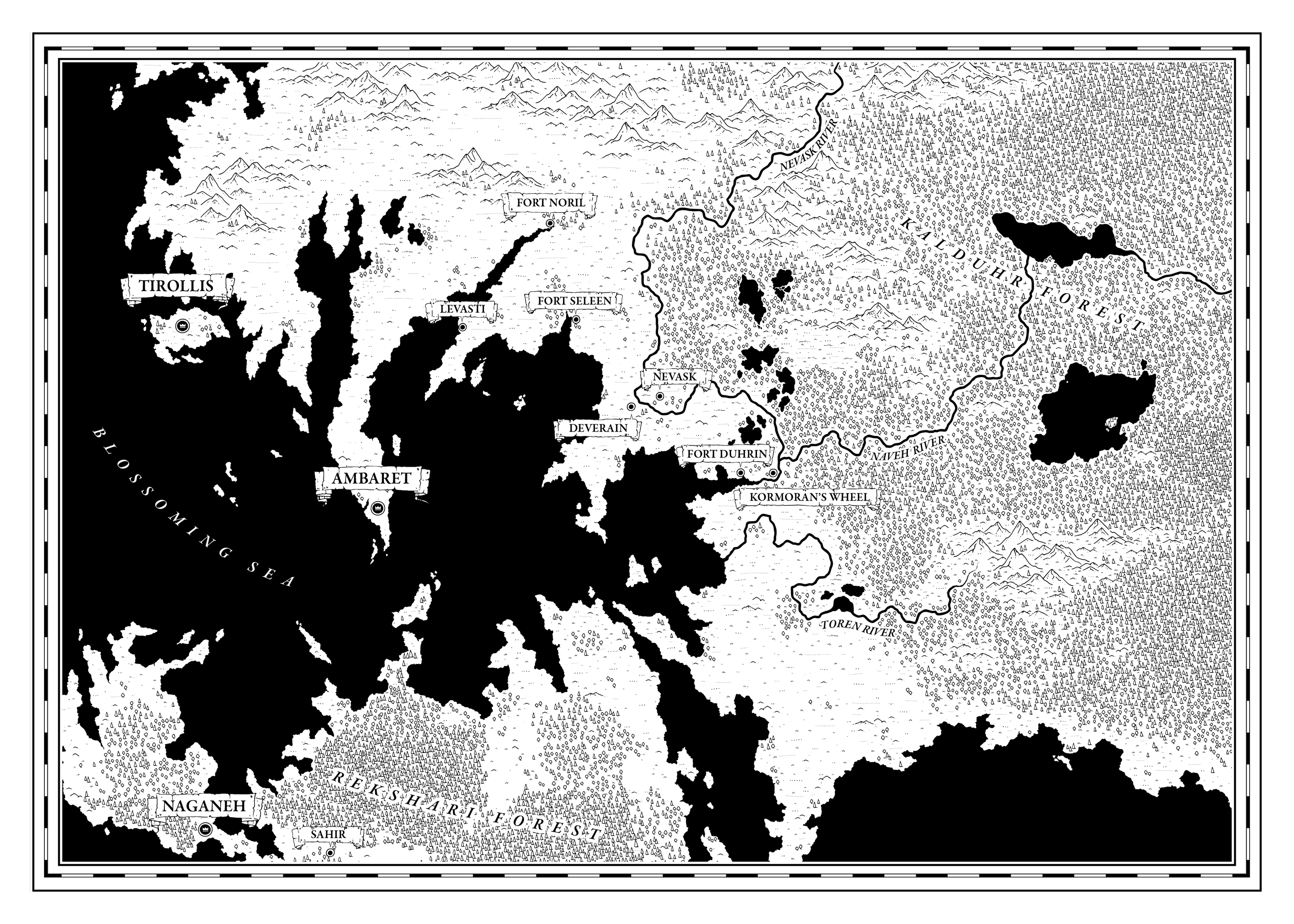
The Good - Guts of Gold
So, I am personally frustrated with Trophy Gold, but there are some good things about the system.
Character creation is a treat, and where the ‘let them write’ part of Trophy really shines. While there is very little mechanically to decide, players are intentionally given statements with no answers, and they’re allowed to figure them out themselves.
The book is mostly Incursions, the game’s quick adventure outlines. You get over a hundred pages of these, and While they are more detailed sketches than actual full fleshed adventures that oddly rarely deal with the forest, they all carry a strong theme and some good set pieces.
For the purpose of one-shots, you’ll find yourself plenty of material.
The system has a concept of Burdens - Basically, it costs money to outfit your character and maintain their lives. For each burden they take on, characters must return with a certain amount of gold or well, that’s it - they go into bankruptcy or are taken by their creditors.
This mechanic forces players to carry on risky adventures when they would not otherwise, and makes them balance the amount of equipment with the amount of adventuring they must do to re-coop the cost. I enjoyed watching the players weigh pushing forward unto death, or risk financial ruin.
The combat system rules are something I may lift in the future if I ever ever need a quick-combat system.
In Trophy, the players each roll a light=die, take a number the resulting number as the number that they receive wounds, and then begin rolling black-die. If their two highest die meet-or-beat the monster difficulty, they win. If any of the die match their own, they take one burden per-die. Then they add another die, and repeat until the monster is dead.
This worked really well in practice, though I can say for this game it can be brutal for boss fights. All but one character walked away from the final boss battle, which made me wonder how Trophy would manage a long campaign when it is so easy to die by a bad dice roll.

Conclusion - TL;DR
Trophy Gold was a pretty frustrating system on some level. It’s a narrative game that wants to accomplish something, but sticks to vague well-wishes and some rote mechanical language, hoping you will figure out the middle needed to get there. Its explanations are loose but its structure is rigid.
There’s a good game here. The theming and difficulty are great. The Hunt Rolls, Combat Rolls, and the character creation are all solid, and provide a great leaping off point. A few pages of example play could go a long way to clarifying the author’s intent, or maybe even a “How to Play” that isn’t about 3 sentences of sentiment would help.
I probably will not play this game again. I am glad to have played it, but in the end it probably does not really suit me or my group. I would recommend it to someone who loves a gritty narrativist game mixed with the OSR.

Oneshot Aftermath: Dragonbane
I’ve been running TTRPGs for over a decade now, I think I have heard just about every possible kind of excuse for sudden game attendance drops. Some of my favorites have been:
- I think I’m going to get laid tonight.
- I forgot that I needed to go to Scotland tonight.
- I’m stuck at home because my car is surrounded by a pack of stray dogs.
Somehow these always come at times when the game can’t afford to have that character missing. But alas, if you want your games to have a multi-year resilience, you learn that you have to plod on and run something, anything, oh gods, what is selling well at DriveThruRPG today, and can I pound the whole rulebook in less than 24 hours?
And that’s generally how my group gets to its occasional oneshots, and today’s game, Dragonbane by Free League Publishing.
Just a warning: I’m mostly going to reflect on the system, how I think the it plays, what changes I would make if I played it again, and how I feel about the system, rather than the contents of the one-shot as I prefer to leave those stories for the players to tell. Expect some rambling.
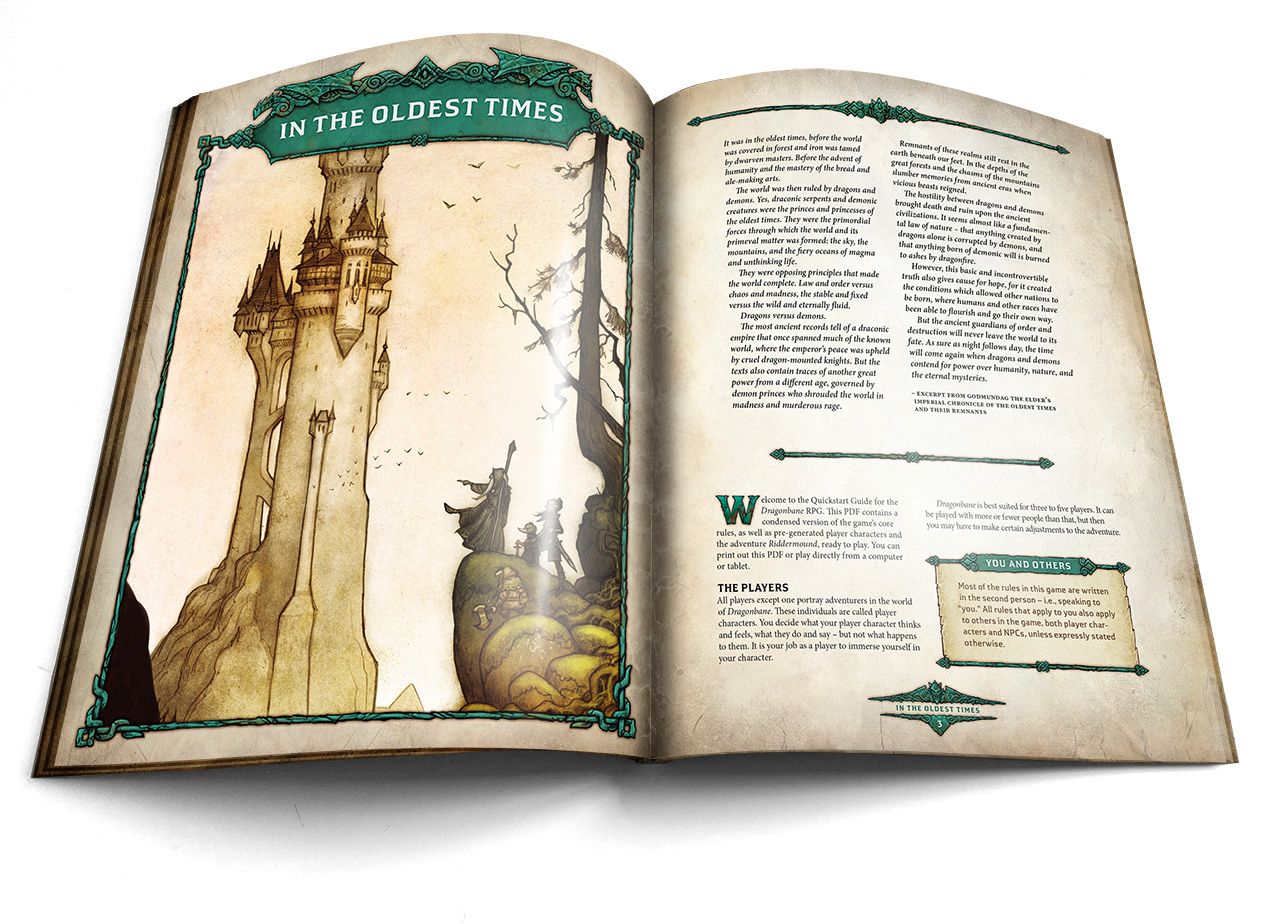
The Guts
Dragonbane is probably better known abroad by its native Swedish title Drakar och Demoner, where it originates as a port of Basic Roleplay’s (BRP) Magic World. Of course, Dragonbane is a D20 system, and Basic Roleplay is a famously a d100 system, so six subsequent editions have obviously been a helluva drug and it’s something very different now.
This system is a D20, roll-under system with the standard battery of fantasy stats and a slightly modified Advantage and Disadvantage mechanic (roll double d20s) called “Boons” and “Banes”. This would make it a happy OSR-alike so far, but there is a couple other things here that may turn off an OSR gamemaster (GM) and make this a more modern D&D-esque game.
As an example: Players have a list of 30 skills, some of which could probably use a bit of hacking down. If your character wants to eat in the wilds, they will need to navigate using their Bushcraft, find an animal using Hunting & Fishing, Decide if they want to learn more about the animal with Beast Lore, kill it using Bows, and then finally cook it up with another round of Bushcraft, because I guess we were running out of room for skills on the character sheet and couldn’t add a Cooking skill.
The innovations on the D20 formula are small, but interesting. Damage bonuses are calculated with die instead of a straight value (your axe might have a d4 strength bonus). “Heroic Abilities” (feats), kin-abilities, and spells almost all utilize the same Willpower resource that is recovered with second-wind style mechanics. Getting these abilities is not straight forward, but not in a bad way. Skill advancement is chance-based. If you roll a 1/20 with a skill or are able to answer yes to a set of questions, the player can roll to advance their skills. This is fun if you’re OK with uneven character advancement.
However, it rankles me that Heroic Abilities are so damn hard to get - A character gets them when they max out a skill, or when the GM feels that the character has done a “Grand Heroic Deed”. Thankfully the GM accepts food-bribes at my table. I’d prefer to dispense with that kind of arbitrariness.
There quite a few other little nice details about this system, but going over them all would probably be tiresome. Just know that there is a lot of modern game polishes here with great production value, and I think what you have in the core rulebook is a clean, solid slimmed down d20 fantasy game that will be appreciated by those who like games like Barbarians of Lemuria and other games of that crunch-level. …And that’s going to be my prefix before I rip into this thing.
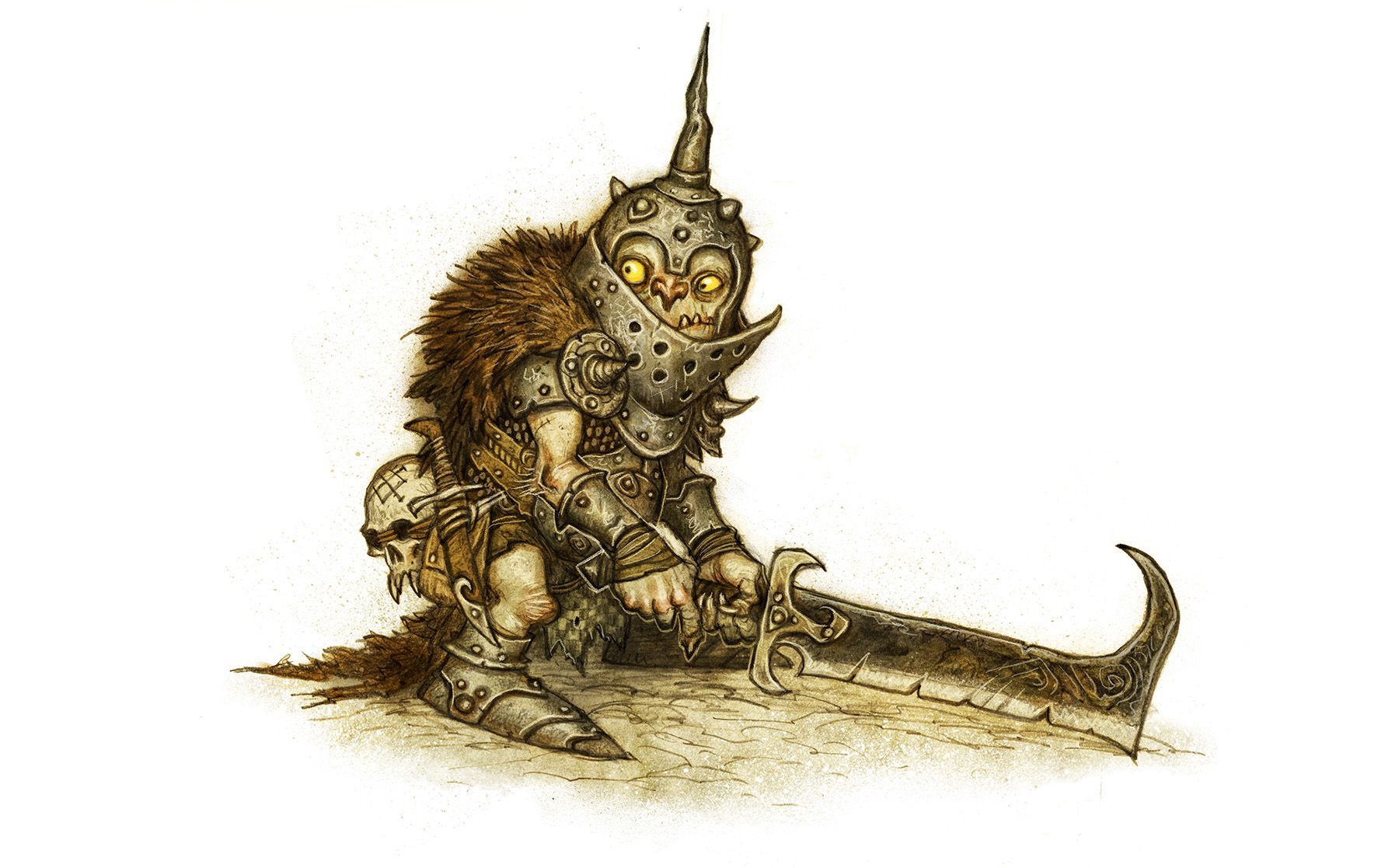
The Problem
Oh man, is this game’s combat brutal in parts.
Remember how I said that Heroic Abilities are only gained by either GM fiat or maxing a skill? Well, Heroic Abilities are also the only way to gain HP during advancement and only in small slivers each time you take it. Hopefully you rolled well on Constitution, because that’s the value you realistically have for the rest of the campaign.
Haters of the D&D HP sponge are probably cheering, and I get that - but also this is paired by monsters who can do a crapload of damage. Your lowest level goblin has the potential to do 14 points (d10 + 1d4) of Damage (actually 24 if they critically hit) in a single round, which means that the players are going to have to treat every mook and minion like a harbinger of Doom no matter how far they advance.
The Quickstart adventure (Riddermount) for reference, is a small dungeon-crawl containing potentially multiple encounters with N+2 goblins, and 3 possible boss-level monsters. This is not a combat light game. In the custom oneshot I created for the players, the players acted smart and stacked the odds in their favor, but still got so brutalized in in the first two combats that they flat out avoided every other encounter. This turned what was supposed to be an exciting exploration of a 5-room dungeon into an exercise of soiled-pants diplomacy and skulking. We still had fun, but it was not really what the I or the players expected or wanted when they built their characters for combat.
Players do have ways of defending themselves. Dodging and parrying to negate an attack are a thing, but reactions aren’t given space in the action economy. If a Player dodges, that is their action in the round and they are done. Heroic Abilities can supplement this, but they are again pretty valuable and means someone has to be pigeonholed as a tank who doesn’t get to do much in combat but be the designated whipping boy, as you have to choose beforehand whether you are going to dodge / parry.
Beyond that, I am not sure it’s intentional. The bleedout rules are very generous and rapid healing exists.
On Your Own
None of this is really well communicated.
Dragonbane clocks in at about 116 pages, which was good for me, but means you’re getting a mostly mechanical affair. Do not expect a ton of advice or hand-holding, or much in the way of inspiration beyond a few nice random generation tables. There is about one page of setting lore (if you can call it that), and about 3-4 pages of general campaign structure and advice.
That makes this a toolbox game rather than a complete package. As a result, I think that despite being a lighter ruleset, this is probably best thought of as a game for a group of experienced gamers. I guess I wish that there was more setting information beyond “Dark forests, some grand struggle between demons and dragons, and duck people. Figure it out, Poindexter”, or barring that, just removing the hints to truly let us figure it out as a generalist system.
Adjustments
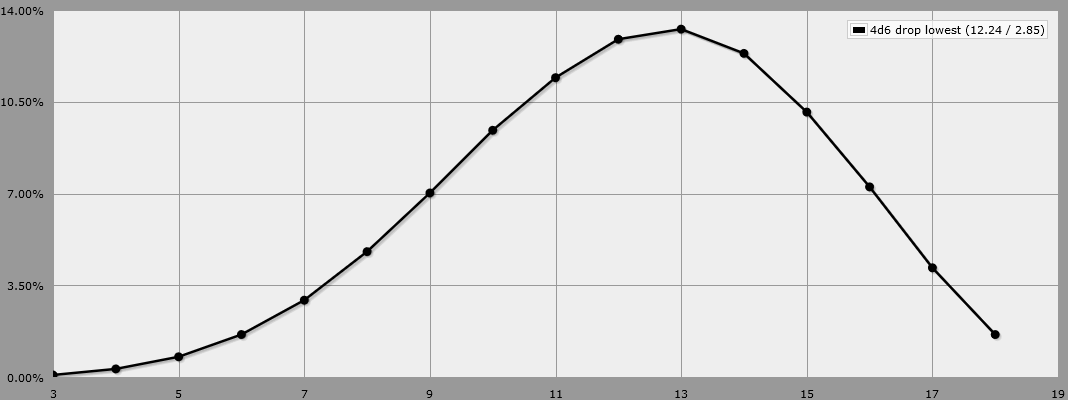
You should probably expect your players to have about ~13HP, as it maps 1-to-1 with Constitution.
I should reiterate I think there’s actually a good game here, despite some of my annoyance at being caught off guard. That said, here are some changes I’d consider making if I ran this ruleset again.
Ditch the initiative system. Initiative is a 1-10 card-draw every round. I generally hate clever and shifting initiative mechanics, as I believe they create extra complexity for little gain. Card-draws are also a pain to implement in VTTs. Just role a D10 + agility bonus die and be done with it.
Give every player the effect of Defensive for free. If a game has a feat or ability that every player believes they should spend their first advance on, just give it to them. Then the players have a free dodge reaction every round.
- Alternatively, move the choice for a dodge action to after the monster has rolled. Change up how Riposting works to compensate for this.
Players get a Heroic Ability at the end of an adventure, regardless of how “Heroic” the GM feels they were.
Maybe, just maybe, not give the weakest monsters a
1d10+1d4damage.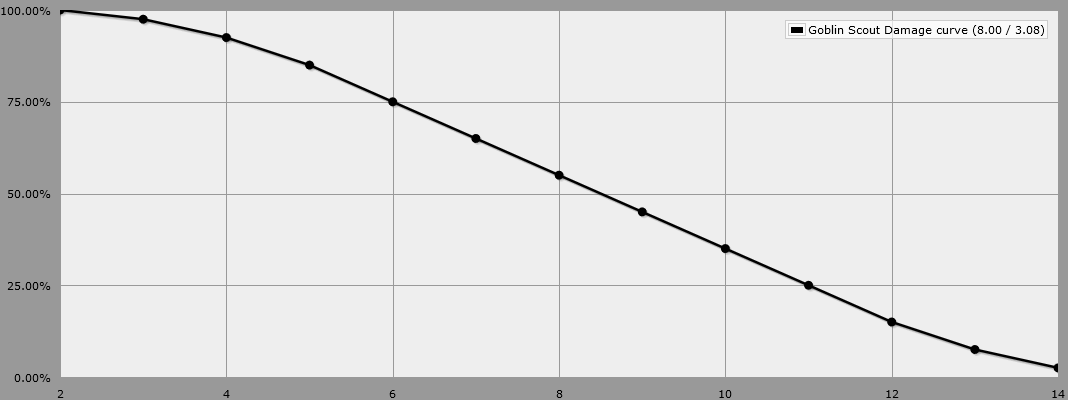
Consider implementing some D&D 4E style 1HP monsters. This is a way you can really achieve the “Mirth and Mayhem” style they’re after and help alleviate the player’s lack of confidence.
Conclusion
I think I often come across as too negative. I did enjoy Dragonbane, and it’s always pretty cool to see non-anglo products making their way over. I think this is a pretty decent one. In the D&D category, I don’t think it’ll replace my old standbys of Dungeon Crawl Classics or 13th Age, but I do think I would consider this before D&D 5E and Shadow of the Demon Lord.
If you’re an experienced GM who wants a simpler 5E with some old-school touches, I would pick this up and play a game to decide for yourself.
Postscript: This oneshot was set up on an extremely short time-line. There’s a high chance I misinterpreted or misunderstood some rules. Leave this report with a bit of salt just in case.